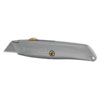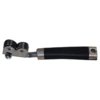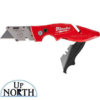- Member DIN
- S128
Hey all!
After my pepakura project is done I am thinking I'll probably venture into foam crafting. To me one of the most important part of foam work is the cleaness and straightness of your cuts. What tools would you recommend with that in mind?
I saw these and thought they were a great idea. Something large that you can really apply some pressure to plus exact radius and bevel cuts.
Foamwerks Cutting Tools
After my pepakura project is done I am thinking I'll probably venture into foam crafting. To me one of the most important part of foam work is the cleaness and straightness of your cuts. What tools would you recommend with that in mind?
I saw these and thought they were a great idea. Something large that you can really apply some pressure to plus exact radius and bevel cuts.
Foamwerks Cutting Tools





